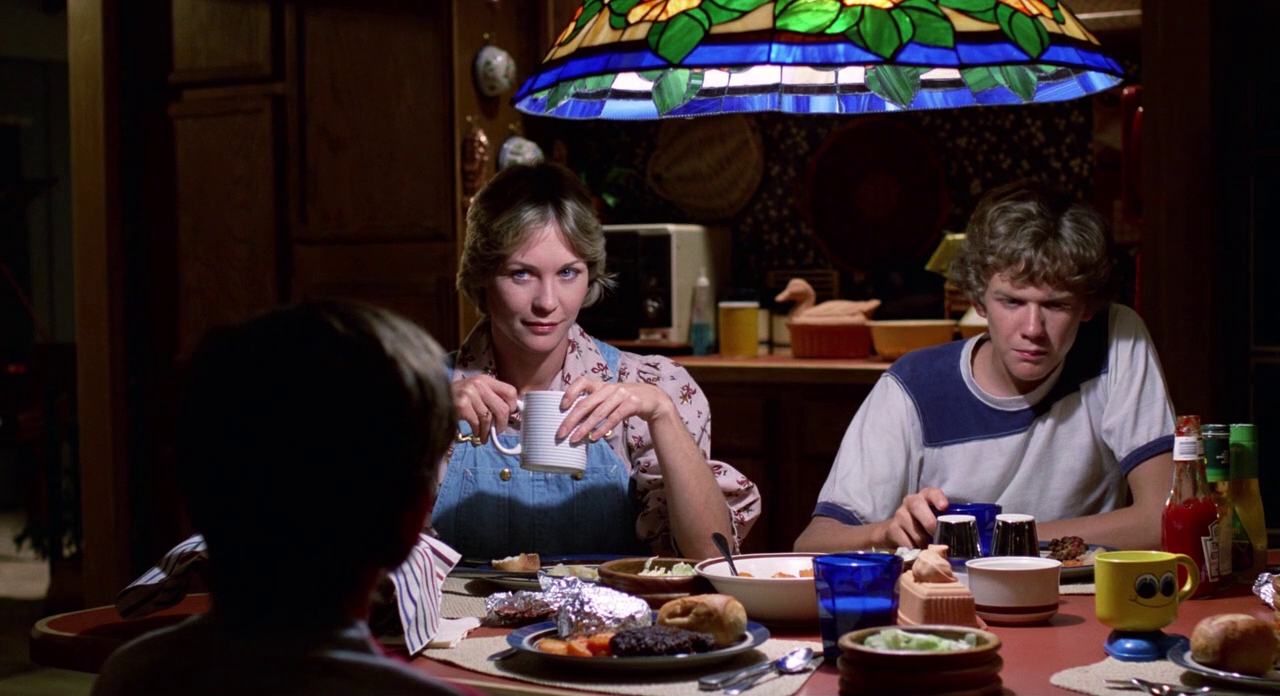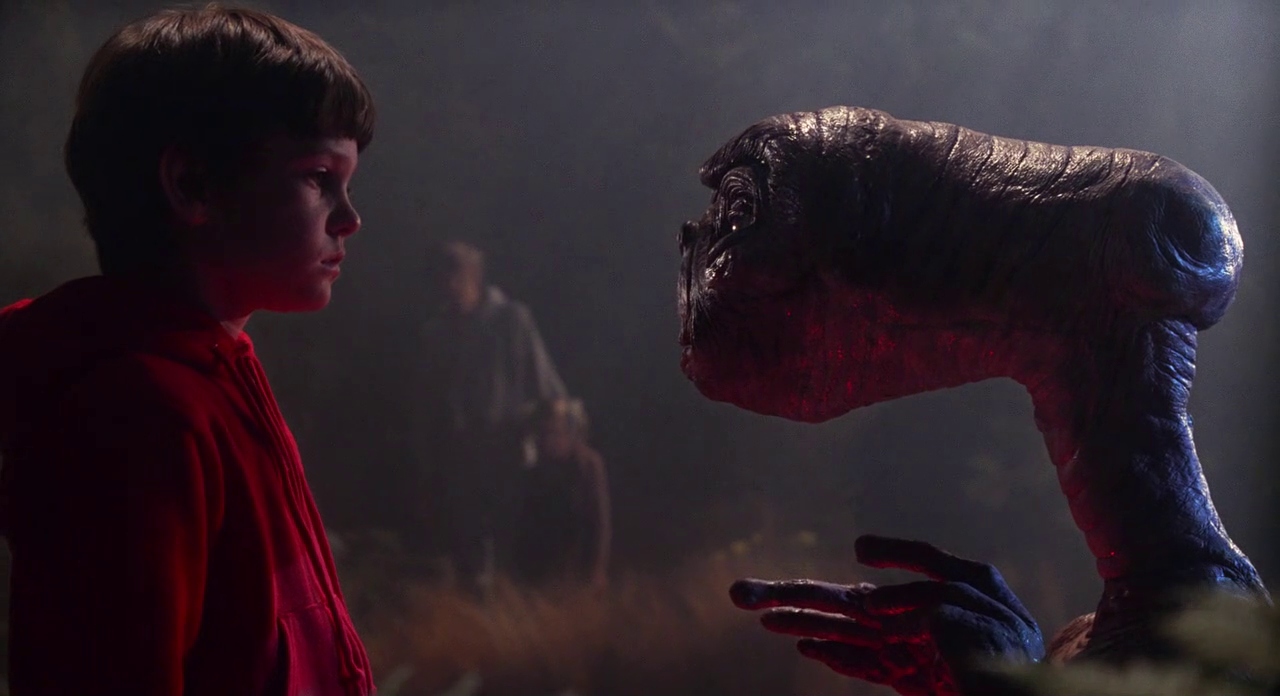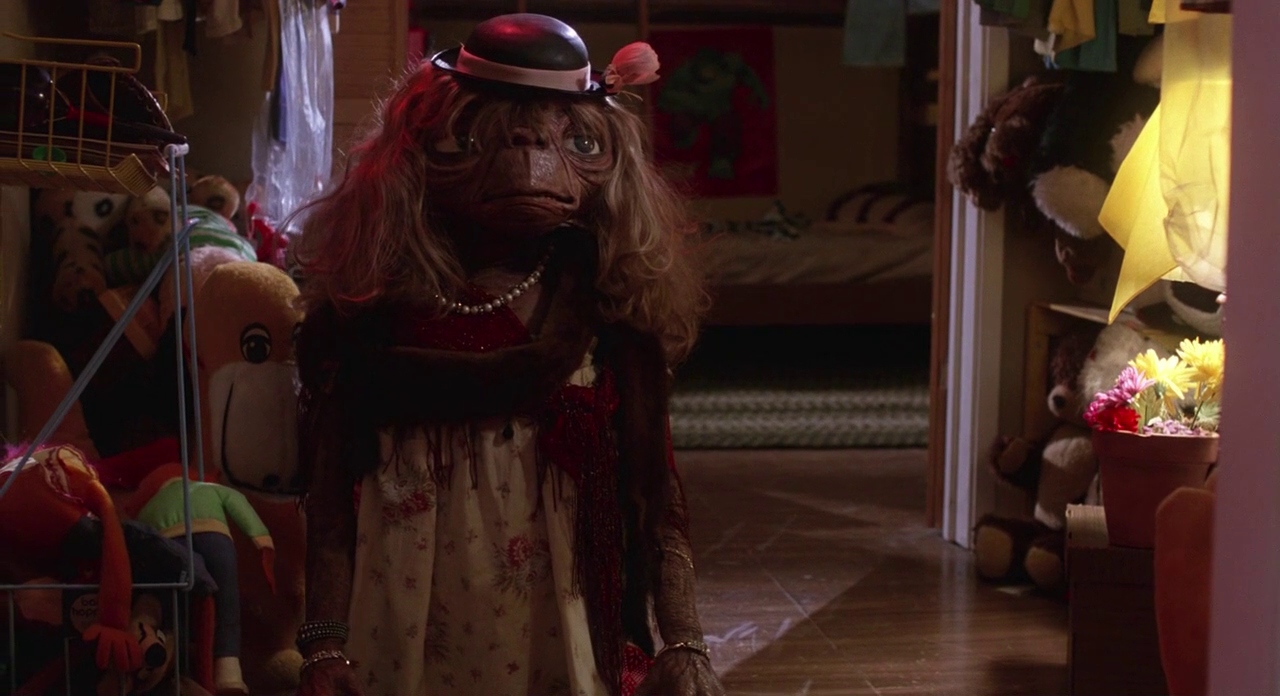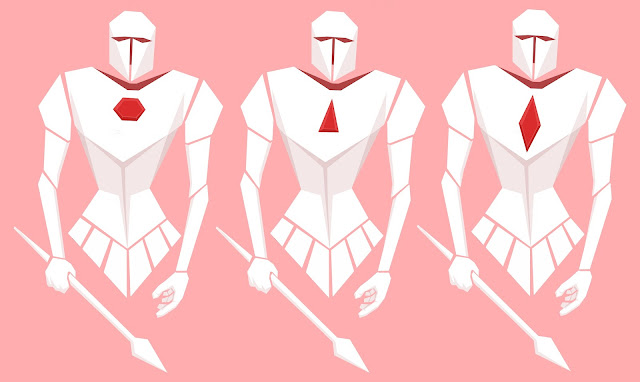Tuesday, 29 March 2016
Monday, 21 March 2016
Thursday, 17 March 2016
Monday, 14 March 2016
Fantastic Voyage: Post-Pitch Reflection
I received a lot of useful feedback after my pitch, and feel very confident about the remaining work I need to do. Some of the feedback I received was:
- No need to add any narration -- Narration might take away focus from the animation, and it was clear enough without a narrator.
- More bacteria -- Especially at the beginning, show lots of small bacteria invading, with the one that survives mutating and destroying the antibiotic.
- Add to ending -- During the final scene showing the ruined landscape, show that the bacteria can still resist the powerful antibiotic - perhaps with a gigantic claw reaching out of the rubble.
- Start work in Maya -- create characters, think about how textures and lighting are going to work.
- Sound -- Needs work, but I managed to make the atmosphere eerie and scary.
Sunday, 13 March 2016
Saturday, 12 March 2016
Thursday, 10 March 2016
Wednesday, 9 March 2016
Film Review: Rosemary's Baby (1968)
| Fig. 1: Rosemary's Baby poster. |
Roman Polanski's Rosemary's Baby (based on the novel by Ira Levin) is captivating and haunting. It tells the story of Rosemary, a young woman who moves to a new apartment with her husband, despite the building in which the apartment is located having a disturbing history. The film is very much a horror, but doesn't use the same methods of inciting fear in an audience as other horror films do; "The film works on multiple levels – as a supernatural thriller (though explicit paranormal elements are limited to a hallucinatory dream sequence and the final shot of the baby's eyes), as a psychological thriller about a paranoid pregnant woman who imagines herself at the centre of a conspiracy, and as the last word in marital betrayal, since the most despicable villain here is surely Guy, who allows his wife to be raped by the devil in exchange for an acting role." (Billson, 2010). The film is subtle, as it shows Rosemary and her husband finding a beautiful apartment, and truly beginning their lives as husband and wife. It all seems very idyllic, and there are many in the audience who would probably aim to have that kind of life one day, but everything is soon turned upside down.
What is most curious about the film is the character it's focused on. The film is titled Rosemary's Baby, and yet, the audience never sees the child. It is also the focus of all the main characters in the film, who show obvious concern for the health of the baby while brushing off Rosemary's pain. The only characters who are concerned for Rosemary are her young friends and older friend, Hutch, who express worries over her appearance. Meanwhile, Rosemary's husband and neighbours, Minnie and Roman Castevet, tell her she looks well and that everything she is experiencing is normal. So, despite Rosemary being the main character, the focus of almost all the characters is on her unborn child. This has an interesting effect, as the audience may feel that they are one of the few people who is there for Rosemary, witnessing what she goes through and believing her when she claims her neighbours are witches after her child. "We identify with Rosemary during her pregnancy, sharing her doubts and fears... When the conclusion comes, it works not because it is a surprise but because it is horrifyingly inevitable. Rosemary makes her dreadful discovery, and we are wrenched because we knew what was going to happen--and couldn't help her." (Ebert, 1968).
The choice by Roman and Minnie to invite Rosemary's husband, Guy (fig. 3), to their "coven" is also interesting, as it shows how they view Rosemary as a vessel for the Devil's child, and not much more. Even at the end, Roman asks Rosemary to be a mother to the child, but tells her she doesn't have to join the coven; they have what they want from her, and while her involvement is welcome, it is not required, and most likely not to be permanent. After the first dinner with Roman and Minnie, Guy becomes Rosemary's controller, as his role in the plot is simply to make sure the baby is born healthy, and prevent Rosemary from discovering what's going on. Though Guy seemed a fine husband at the beginning, it is clear he is very self-centered, as he agrees to offer his wife to Satan for his own selfish reasons; a successful career, at the expense of the people around him.
Throughout the film, Rosemary is shown wearing a number of beautiful outfits, usually in blue, yellow or other light, pastel colours (fig. 4). Even in very short scenes, Rosemary appears to always be wearing something new. On the night she conceives, she wears red (fig. 5), a colour associated with danger, blood, passion and the Devil. She is later drugged, stripped, painted and raped, before waking up naked the next morning. Rosemary's outfit choices change as her health deteriorates, becoming darker, except for a blue night gown and fluffy blue slippers. At the end of the film, she wears another blue nightgown (fig. 6) slightly different in design. This colour choice is interesting, as the Virgin Mary is often shown wearing blue, especially in renaissance art. The blue gowns stand out, as they seem to be the only floor-length outfits Rosemary owns, her other outfits usually being very short. The red outfit stands out for the same reason; none of Rosemary's other outfits match it in any way.
There are clear similarities between Rosemary and the Virgin Mary, as both are used as vessels to carry the child of a powerful being, with Rosemary's child essentially set to become Satan's equivalent of Jesus. Beyond this, they are opposites. Though Rosemary, portrayed by the talented Mia Farrow, is supposed to represent the modern woman of the 60s, she was raised catholic, and has dreams involving the Pope and a nun who was her teacher. Rosemary does not claim to, nor appear to be, overly religious, but there is some suggestion she feels guilty about not being so. She bows her head at the dinner table when the subject of religion comes up, and asks the imaginary Pope she sees -- whilst being raped -- if she is forgiven.
There are certain discomforting qualities to Rosemary, the main one being how childlike she is, both in behaviour and appearance; "Polanski slyly exploits her mannered childishness. Even before she gets pregnant she wears shapeless little smocks and flat, little girl shoes. When she has her hair trendily cropped at Vidal Sassoon (one of the film's ubiquitous, precise notations of a cultural signpost for the year of the story, 1965-66) she is even more pathetically waifish." (Errigo, 2000). This is not new for Polanski, whose 1965 film Repulsion tells the story of Carol (fig. 7), a young woman whose mental state deteriorates when she is left in her apartment alone for a few days. Carol also possesses very childlike mannerisms, and, like Rosemary, is shown to be vulnerable and impressionable. There is something sickening about Polanski's decision to have these adult women portrayed as childish, then show them being raped and abused by characters who have more power.
Overall, Rosemary's Baby does an excellent job of keeping its audience interested. We want so desperately for Rosemary to come out of the situation on top, and feel like cheering for her every time she defies her husband, doctor and neighbours. "The best thing that can be said about the film, I think, is that it works. Polanski has taken a most difficult situation and made it believable, right up to the end." (Ebert, 1968). Most of the characters are incredibly realistic, especially Minnie Castevet, who truly embodies the irritating, nosy neighbour that almost everyone can relate to having at one point in their lives. The film ends with no real conclusion, as Rosemary smiles sweetly at her demonic looking child in its black cot, rocking it gently. It would seem odd for Rosemary to fight back for so long, only to give in and mother a monster -- even though this is exactly what happens in Ira Levin's novel -- , making the open ending far more appealing to the audience so they can decide the fate of Rosemary and her baby. Images:
Figure 1. Rosemary's Baby poster. (1968) [poster] At: http://www.modernsuperior.com/2013/11/28/review-rosemarys-baby-fresh-eyes/ (Accessed on: 09.03.16)
Figure 2. Rosemary (right) and Minnie (left). (1968) From: Rosemary's Baby. Directed by: Roman Polanski [Film still] United States: Paramount Pictures. At: http://cinemagumbo.squarespace.com/journal/tag/rosemarys-baby (Accessed on: 09.03.16)
Figure 3. Guy Woodhouse. (1968) From: Rosemary's Baby. Directed by: Roman Polanski [Film still] United States: Paramount Pictures. At: http://www.standbyformindcontrol.com/2013/08/mind-control-double-feature-54-bad-mutha/ (Accessed on: 09.03.16)
Figure 4. One of Rosemary's early outfits. (1968) From: Rosemary's Baby. Directed by: Roman Polanski [Film still] United States: Paramount Pictures. At: http://theodysseyonline.com/uvm/5-halloween-costumes-for-the-fashion-forward/198219 (Accessed on: 09.03.16)
Figure 5. Rosemary in red. (1968) From: Rosemary's Baby. Directed by: Roman Polanski [Film still] United States: Paramount Pictures. At: http://stylelovely.com/stylemeifyoucan/2012/12/24/rosemarys-baby-costume-design/ (Accessed on: 09.03.16)
Figure 6. The Blue Gown. (1968) From: Rosemary's Baby. Directed by: Roman Polanski [Film still] United States: Paramount Pictures. At: http://pyxurz.blogspot.co.uk/2011/10/rosemarys-baby-page-6-of-7.html (Accessed on: 09.03.16)
Figure 7. Carol in Repulsion (1965). (1965) From: Repulsion. Directed by: Roman Polanski [Film Still] Great Britain: Compton Pictures. At: https://www.moviezine.se/nyheter/15-godbitar-pa-filmnet (Accessed on: 10.03.16)
Bibliography:
Ebert, R. (1968) 'Rosemary's Baby' In: rogerebert.com 29.07.1968 [online] At: http://www.rogerebert.com/reviews/rosemarys-baby-1968 (Accessed on: 09.03.16)
Billson, A. (2010) 'Rosemary's Baby: No 2 best horror film of all time' In: The Guardian 22.10.2010 [online] At: http://www.theguardian.com/film/2010/oct/22/rosemarys-baby-polanksi-horror (Accessed on: 09.03.16)
Errigo, A. (2000) 'Rosemary’s Baby Review' In: Empire 01.01.2000 [online] At: http://www.empireonline.com/movies/rosemarys-baby/review/ (Accessed on: 10.03.16)
| Fig. 2: Rosemary (right) and Minnie (left). |
| Fig. 3: Guy Woodhouse. |
 |
| Fig. 4: One of Rosemary's early outfits. |
| Fig. 5: Rosemary in red. |
 |
| Fig. 6: The Blue Gown. |
 |
| Fig. 7: Carol in Repulsion (1965) |
Overall, Rosemary's Baby does an excellent job of keeping its audience interested. We want so desperately for Rosemary to come out of the situation on top, and feel like cheering for her every time she defies her husband, doctor and neighbours. "The best thing that can be said about the film, I think, is that it works. Polanski has taken a most difficult situation and made it believable, right up to the end." (Ebert, 1968). Most of the characters are incredibly realistic, especially Minnie Castevet, who truly embodies the irritating, nosy neighbour that almost everyone can relate to having at one point in their lives. The film ends with no real conclusion, as Rosemary smiles sweetly at her demonic looking child in its black cot, rocking it gently. It would seem odd for Rosemary to fight back for so long, only to give in and mother a monster -- even though this is exactly what happens in Ira Levin's novel -- , making the open ending far more appealing to the audience so they can decide the fate of Rosemary and her baby. Images:
Figure 1. Rosemary's Baby poster. (1968) [poster] At: http://www.modernsuperior.com/2013/11/28/review-rosemarys-baby-fresh-eyes/ (Accessed on: 09.03.16)
Figure 2. Rosemary (right) and Minnie (left). (1968) From: Rosemary's Baby. Directed by: Roman Polanski [Film still] United States: Paramount Pictures. At: http://cinemagumbo.squarespace.com/journal/tag/rosemarys-baby (Accessed on: 09.03.16)
Figure 3. Guy Woodhouse. (1968) From: Rosemary's Baby. Directed by: Roman Polanski [Film still] United States: Paramount Pictures. At: http://www.standbyformindcontrol.com/2013/08/mind-control-double-feature-54-bad-mutha/ (Accessed on: 09.03.16)
Figure 4. One of Rosemary's early outfits. (1968) From: Rosemary's Baby. Directed by: Roman Polanski [Film still] United States: Paramount Pictures. At: http://theodysseyonline.com/uvm/5-halloween-costumes-for-the-fashion-forward/198219 (Accessed on: 09.03.16)
Figure 5. Rosemary in red. (1968) From: Rosemary's Baby. Directed by: Roman Polanski [Film still] United States: Paramount Pictures. At: http://stylelovely.com/stylemeifyoucan/2012/12/24/rosemarys-baby-costume-design/ (Accessed on: 09.03.16)
Figure 6. The Blue Gown. (1968) From: Rosemary's Baby. Directed by: Roman Polanski [Film still] United States: Paramount Pictures. At: http://pyxurz.blogspot.co.uk/2011/10/rosemarys-baby-page-6-of-7.html (Accessed on: 09.03.16)
Figure 7. Carol in Repulsion (1965). (1965) From: Repulsion. Directed by: Roman Polanski [Film Still] Great Britain: Compton Pictures. At: https://www.moviezine.se/nyheter/15-godbitar-pa-filmnet (Accessed on: 10.03.16)
Bibliography:
Ebert, R. (1968) 'Rosemary's Baby' In: rogerebert.com 29.07.1968 [online] At: http://www.rogerebert.com/reviews/rosemarys-baby-1968 (Accessed on: 09.03.16)
Billson, A. (2010) 'Rosemary's Baby: No 2 best horror film of all time' In: The Guardian 22.10.2010 [online] At: http://www.theguardian.com/film/2010/oct/22/rosemarys-baby-polanksi-horror (Accessed on: 09.03.16)
Errigo, A. (2000) 'Rosemary’s Baby Review' In: Empire 01.01.2000 [online] At: http://www.empireonline.com/movies/rosemarys-baby/review/ (Accessed on: 10.03.16)
Tuesday, 8 March 2016
@Phil: Story Idea
After discussing ideas today and some further research, this is currently where I am with my story. I would like some feedback before I begin writing the script.
- Begins with the immune system knight, patrolling the area. A clawed hand reaches over the knights shoulder and the screen goes black.
- An antibiotic knight arrives on the scene, an hexagon shape on their chest. They can see the sky changing from it's usual pink, to red, to bright green.
- Seeing the bacteria, they charge at it, killing it instantly.
- Turning away from the bacteria, assuming the battle won, a larger, mutated bacteria grows from the dead one's body, a hexagon on its chest. It looms over the knight before killing them.
- Two more knights arrive, triangles on their chests. They attack the large bacteria, one impaling it with a spear.
- The bacteria staggers, before removing the spear, and growing into an even larger bacteria with a triangle on its chest. It kills the knights.
- Three more knights are sent in, with diamonds on their chests. The environment has almost completely changed to a sickening green colour.
- The three knights try to attack the bacteria, two are struck down quickly.
- The bacteria grows again into a far larger beast, a diamond formed on its chest.
- It raises it's claw, and quickly strikes down the remaining antibiotic.
- The bacteria begins moving deeper into the environment, the sky turning green, the vein-like trees becoming withered and black.
- On its way, the bacteria comes across a single white rock in the landscape. As it gets closer, the rock levitates and opens to reveal one more knight -- the super antibiotic.
- As the bacteria goes to attack the knight, it explodes.
- The blast destroys the powerful bacteria, but leaves destruction in its wake; the vein-like trees have broken in half or been flattened, and a large scar has been left in the antibiotic's place.
- The sky turns to red, though there is still some green left in the distance.
I found that assigning the name of real antibiotics to the antibiotic knights didn't work, as it just made the story increasingly inaccurate without adding more bacteria. I need the animation to be both interesting to watch and educational, and I'm not confident the story shows that.
Monday, 7 March 2016
Fantastic Voyage: Changes to Landscape
Sunday, 6 March 2016
Fantastic Voyage: Immune System Thumbnails
The immune system will appear at the beginning of the animation. The bacteria will be shown to avoid it, attack it, and/or disguise itself within one of the knights. I've given the immune system a plainer design to the antibiotics, and given them shields to portray them more as defenders than attackers, but I would be happy to receive feedback and ideas in order to improve their design. I am also unsure about what colours would suit them best, as I would like them to be slightly different to the antibiotics. Any help with getting closer to a final design would be appreciated.
Friday, 4 March 2016
Fantastic Voyage: Antibiotic Thumbnails Continued - Slight Redesign
Redesigned the helmets slightly to suit the rest of the design, and changed the shoulders to give the character more articulation. I think I'm getting close to finalising designs, and the next step will be creating different knights inspired by certain antibiotics, such as penicillin.
Wednesday, 2 March 2016
Tuesday, 1 March 2016
Fantastic Voyage: Antibiotic Thumbnails Continued
Trying to work out a final look for the antibiotics, mostly debating lower body shape and weaponry. 1, 2 and 3 have weapons as part of their bodies, while 4 holds a spear. I like the lower part of 4s body, but also 1s legs, which I think might look better longer.
Film Review: E.T. the Extra-Terrestrial (1982)
| Fig. 1: E.T. poster. |
 |
| Fig. 2: Family dinner. |
 |
| Fig. 3: Goodbyes. |
 |
| Fig. 4: E.T. dressed up. |
E.T. is still an immensely popular film to this day, loved by those who experienced it upon release as much as those who saw it much later. A sci-fi film made about children, for children, that works as a family film, as it has something any family member could relate to.
""E.T. The Extra-Terrestrial" is a reminder of what movies are for. Most movies are not for any one thing, of course. Some are to make us think, some to make us feel, some to take us away from our problems, some to help us examine them. What is enchanting about "E.T." is that, in some measure, it does all of those things." (Ebert, 2002).
Images:
Figure 1. E.T. poster. (1982) [poster] At: http://www.moviepostershop.com/et--the-extra-terrestrial-movie-poster-1982 (Accessed on: 01.03.16)
Figure 2. Family dinner. (1982) From: E.T. The Extra-Terrestrial. Directed by: Steven Spielberg [Film still] United States: Universal Studios. At: http://film-grab.com/2013/02/17/e-t-the-extra-terrestrial/ (Accessed on: 21.02.16)
Figure 3. Goodbyes. (1982) From: E.T. The Extra-Terrestrial. Directed by: Steven Spielberg [Film still] United States: Universal Studios. At: http://film-grab.com/2013/02/17/e-t-the-extra-terrestrial/ (Accessed on: 21.02.16)
Figure 4. E.T. dressed up. (1982) From: E.T. The Extra-Terrestrial. Directed by: Steven Spielberg [Film still] United States: Universal Studios. At: http://film-grab.com/2013/02/17/e-t-the-extra-terrestrial/ (Accessed on: 21.02.16)
Bibliography:
Ebert, R (2002) 'E.T. THE EXTRA-TERRESTRIAL' In: RogerEbert.com 22.03.2002 [online] At: http://www.rogerebert.com/reviews/et-the-extra-terrestrial-2002 (Accessed on: 01.03.16)
Lee, M (2002) 'E.T. the Extra-Terrestrial, review: 'redefined popular sci-fi'' In: The Telegraph 28.12.2014 [online] At: http://www.telegraph.co.uk/culture/11310774/Must-have-movie-ET-The-Extra-Terrestrial-1982.html (Accessed on: 01.03.16)
Canby, V (1982) 'E T The Extra Terrestrial (1982)
'E.T.,' FANTASY FROM SPIELBERG' In: The New York Times 11.06.1982 [online] At: http://www.nytimes.com/movie/review?res=9C0DEFDB143BF932A25755C0A964948260 (Accessed on: 01.03.16)
Subscribe to:
Comments (Atom)
































